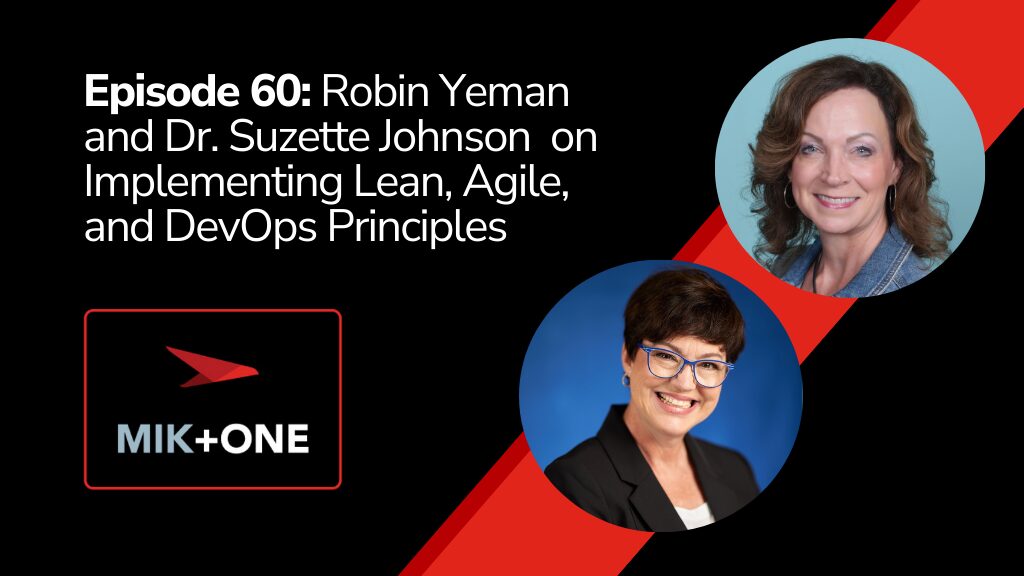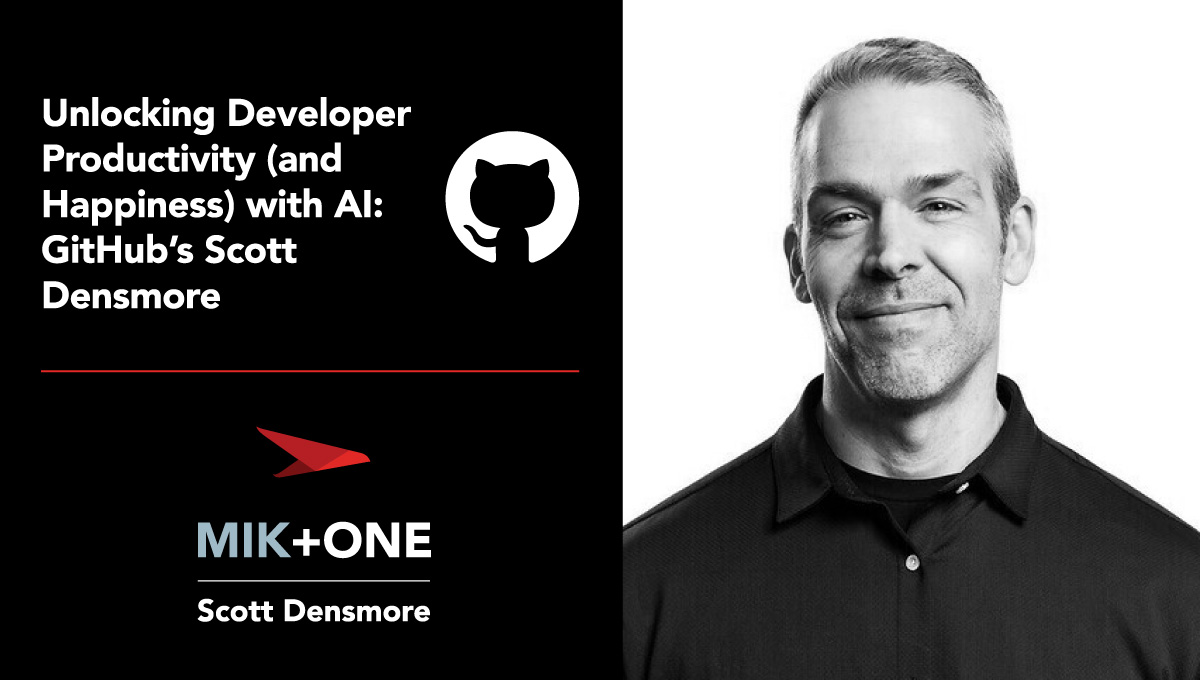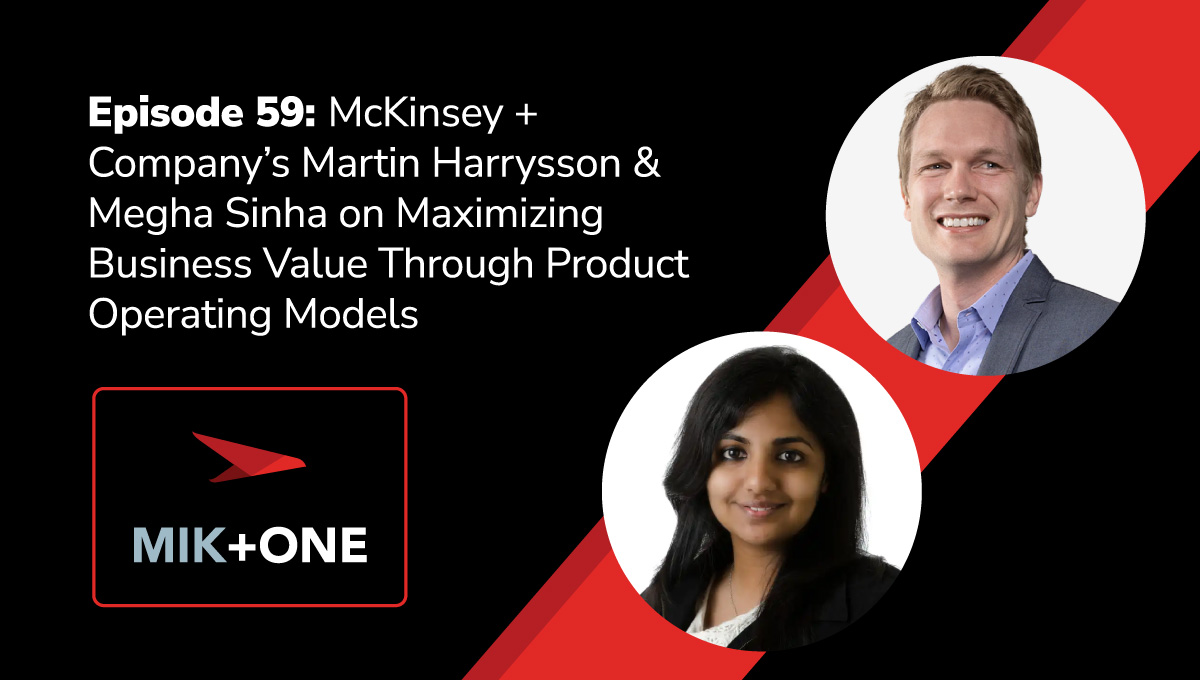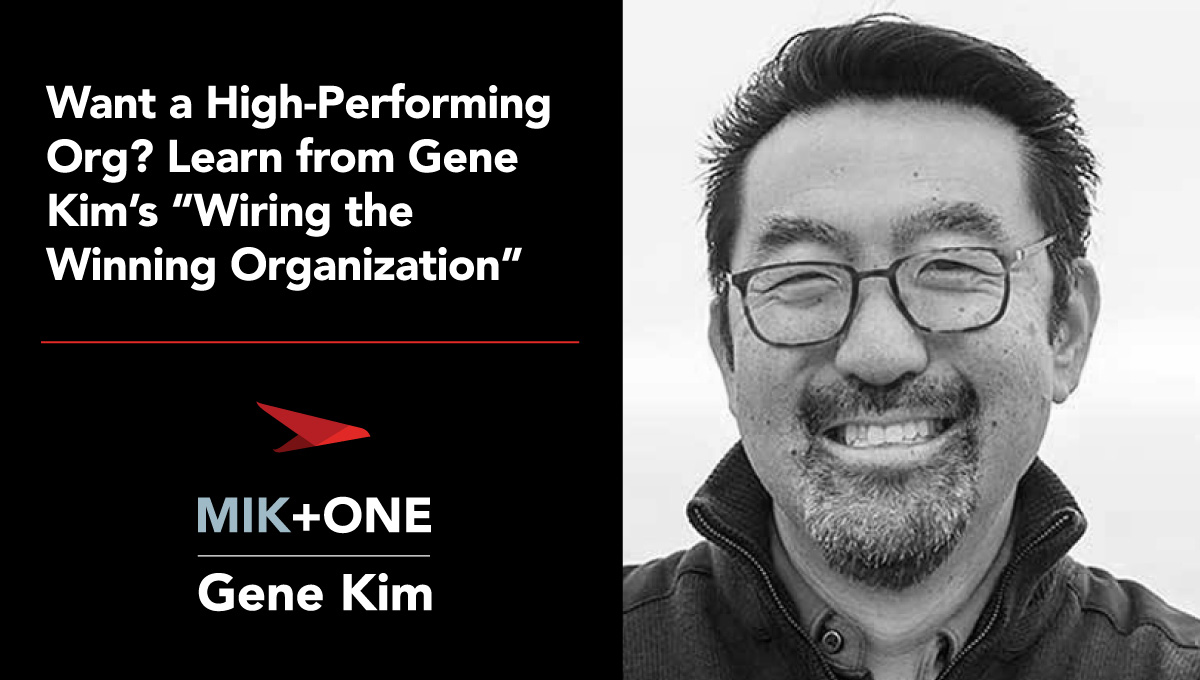
What if a simple shift in your operating model could lead to significantly higher returns and improved operating margins for cyber-physical systems?
In the latest Mik + One podcast, Dr. Mik Kersten, Chief Technology Officer at Planview, sat down with Dr. Suzette Johnson and Robin Yeman to discuss their groundbreaking work on Industrial DevOps and its potential to revolutionize the development of cyber-physical systems.
Who are Dr. Suzette Johnson and Robin Yeman?
Dr. Suzette Johnson is an NG Fellow for Lean Agile and Digital Integration at Northrop Grumman Corp. She works for the Space Systems Division, fostering operational and program excellence to achieve mission and business outcomes. Suzette has led the adoption of lean and agile across the enterprise and has supported more than 100 internal projects and government programs on their lean and agile journey.
Robin Yeman is an author and industry leader with more than 28 years of experience in systems and software engineering. Robin is the Executive Space Lead at Carnegie Mellon Software Engineering Institute, where she focuses on integrating cutting-edge technologies into government space programs. During her tenure as a senior technical fellow at Lockheed Martin, Robin’s leadership in agile transformation drove significant modernization and cost savings across various initiatives, from submarines to satellites.
Together, Suzette and Robin have co-authored several papers on industrial DevOps and recently published a book titled Industrial DevOps: Build Better Systems Faster.
Challenges and Implementation Strategies
Transitioning to an Industrial DevOps model presents several challenges
Misconceptions about Agile and DevOps: Many organizations believe that agile and DevOps practices only apply to software development. This misconception often leads to the creation of bottlenecks when trying to integrate hardware and software components.
Organizational Structure: Traditional organizational structures often hinder the implementation of Industrial DevOps. The challenge lies in organizing teams around value streams rather than functional silos.
Regulatory Compliance and Safety Assurance: In industries with strict regulatory requirements, there’s a common belief that agile and DevOps practices cannot be applied due to compliance and safety concerns.
Integration Complexity: Cyber-physical systems often involve multiple suppliers and complex integrations, making it challenging to implement seamless DevOps practices.
Cultural Shift. As with any significant change, shifting to an Industrial DevOps model requires a substantial cultural transformation within the organization.
Best Clip
Clip Key Takeaways
- Agility and long-term planning can coexist.
- Agile and DevOps practices should be organization-wide, not just confined to specific teams.
- Visibility into business objectives is essential for success.
- Teams should have freedom, but leadership must define clear objectives and not dictate execution.
- Leaders need to set and communicate key metrics like:
- Shorter lead times
- Increased transparency
- Adaptability to changing markets
- Robin says that leadership should focus on providing “line of sight to business objectives” rather than managing day-to-day tasks.
Podcast Key Takeaways
- The Importance of Long-term Agile Planning: Suzette and Robin make it clear that agile practices can coexist with long-term goals. As Suzette puts it, “You can be agile while having longer-term planning.” This highlights the need for flexibility without losing sight of overarching business objectives.
- Embedding Agile Across the Organization: Agile should extend beyond isolated teams. You’ll hear strategies for scaling agile practices to become an organization-wide mindset, empowering leaders to better navigate the complexities of modern digital environments.
- Aligning with Business Objectives: There is a dire need for leadership to provide teams with clear, measurable business objectives. You’ll gain insights into how to set clear expectations and the types of metrics that drive successful agile transformations.
- Navigating Digital Disruption: Digital disruption is a key focus of the conversation. Learn how organizations in sectors like aerospace, defense, and technology are incorporating cutting-edge tools and methods to remain competitive in fast-changing markets.
- Practical Examples from Government Programs: Robin shares real-world examples from her work in integrating innovative technology into government programs. These case studies illustrate how agile can be applied even in high-regulation environments like space exploration.
- Leadership’s Role in Agile Success: Leadership plays a critical role in providing vision, setting expectations, and guiding teams without micromanaging their daily work.
Changing the Future of Cyber-Physical Systems
Johnson and Yeman highlight the strategic shifts necessary for organizations developing cyber-physical systems to thrive in the digital age. By adopting Industrial DevOps principles, companies can potentially achieve faster development cycles, improved quality, and better alignment with business objectives.
Want More?
Listen to the full episode and check out the Mik + One archives to listen to episodes with these and other experts. Be sure to subscribe to learn when new episodes are released.




